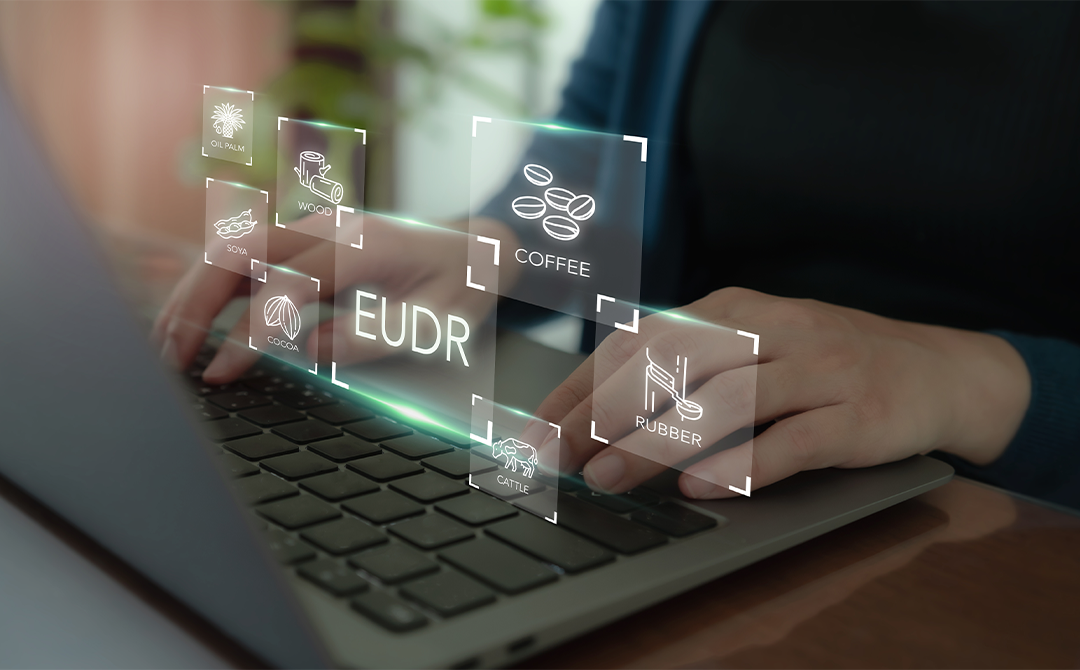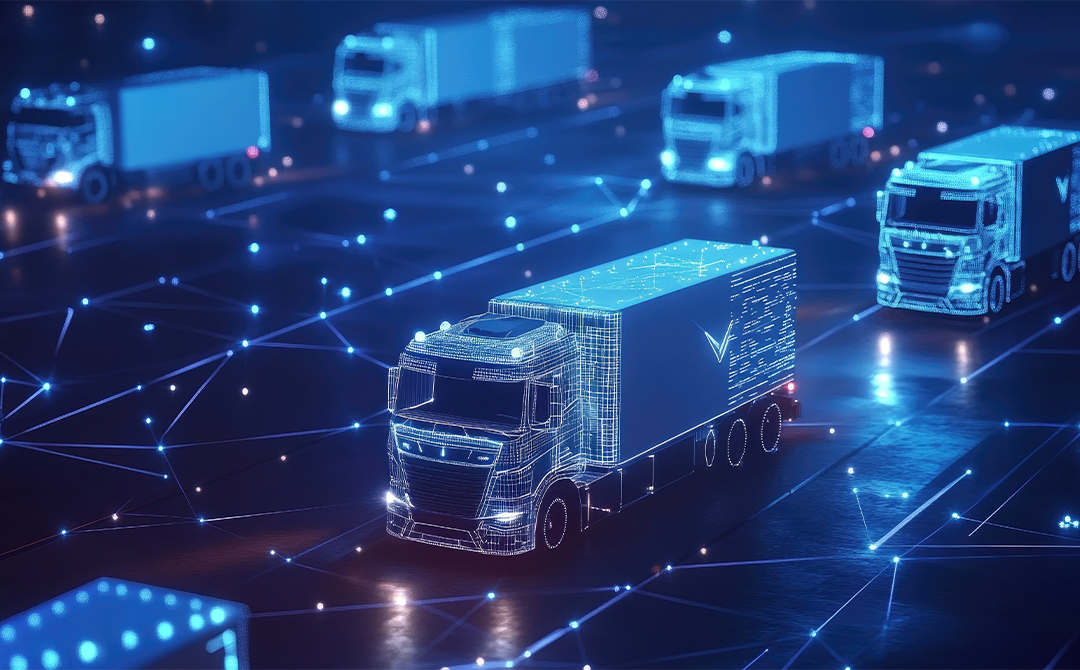
Global brands once competed on price and availability—starting December 2025, they must compete on transparency and traceability.
When the European Union finalized the Deforestation Regulation (EUDR, Regulation (EU) 2023/1115), few companies anticipated how dramatically global supply chains would be reshaped. Beginning December 30, 2025, commodities such as cattle, cocoa, coffee, palm oil, rubber, soy, and wood products entering—or leaving—the EU must conclusively demonstrate they are deforestation-free.
Non-compliance carries heavy penalties: fines up to 4% of annual EU turnover, confiscation of products, and exclusion from EU public contracts (Official Regulation). Given that over €7 billion worth of these commodities enter the EU annually (Deloitte, 2024), the regulation impacts thousands of brands, from Nestlé and Unilever to IKEA and L’Oréal.
EUDR compliance is not optional. It requires precise six-decimal GPS coordinates, rigorous due diligence (Articles 9–11), ongoing monitoring, and submission of statements via the TRACES platform. For supply chain leaders, it’s a regulatory transformation akin to GDPR—but with deep operational implications.
The Data Desert: Why Traditional Compliance Falls Short
Despite advanced ERP systems and sophisticated supplier portals, most global companies have limited visibility beyond their immediate suppliers. In critical commodity areas like palm oil or cocoa, full farm-level traceability remains elusive.
Currently, fewer than 30% of Fortune 500 companies can reliably trace materials to their origins. For instance, a typical chocolate bar contains ingredients from numerous smallholder farms across West Africa, yet precise location data is rarely captured.
EUDR’s strict requirements (Article 9) demand geolocation precision, satellite-backed risk assessments, and continuous monitoring. Traditional compliance tools—annual audits, static spreadsheets, and manual questionnaires—simply aren’t scalable or detailed enough.
Root Causes: The Transparency Gap in Supply Chains
Three systemic issues underpin the current traceability shortfall:
- Disconnected data systems: ERP, procurement, and sustainability databases rarely communicate seamlessly, trapping critical traceability data.
- Fragmented supplier networks: A single shipment may pass through multiple intermediaries; smallholder producers often lack digital infrastructure to capture geolocation data.
- Compliance as secondary: Traceability is frequently treated as a supplementary function, with procurement and operations prioritizing cost-efficiency over integrated sustainability metrics.
Static audits provide only snapshots. Rapid forest condition changes—due to seasonal clearings or illegal logging—often go unnoticed without real-time monitoring.
Tech Solutions: Building Digital Traceability Infrastructure
Traditional compliance models—built on periodic audits, paper-based questionnaires, and disconnected documentation—are no longer sufficient. These reactive approaches offer limited visibility, often restricted to Tier-1 or Tier-2 suppliers, and fall short of meeting the real-time, multi-tier traceability demanded by EUDR.
By contrast, leading organizations are transitioning to analytics-driven compliance ecosystems. These systems integrate continuous satellite monitoring (e.g., Copernicus, Sentinel), AI-powered risk scoring dashboards, and digital batch genealogy tools that trace products back to individual farm plots. Real-time alerts, blockchain-secured product passports, and graph-based supplier mapping replace outdated manual methods. This evolution enables organizations to predict and prevent compliance breaches before they occur—rather than respond after the fact.
Together, these capabilities shift compliance from a regulatory burden to a strategic advantage—unlocking transparency, speed, and scalability across the supply chain.
Four essential technologies form the backbone of EUDR-ready traceability:
- Batch genealogy analytics: Digital threads connecting finished products back through supplier batches to original farm plots.
- Satellite-AI integration: Real-time detection of deforestation using advanced satellite imagery and machine learning.
- Digital product passports: Blockchain-secured certificates embedding geolocation data directly within products and shipments.
- Graph databases: Mapping complex supplier networks for rapid identification of risks and full multi-tier traceability.
Case Study: Enhancing End-to-End Traceability for a Global Agri-Processor
A global agribusiness major struggled to trace soybeans sourced from deforestation prone areas of the Amazon–Cerrado frontier. Disconnected spreadsheets, informal messaging, and standalone ERP systems left grain purchases, storage, and processing data scattered—making it hard to prove sustainability claims or meet EUDR deadlines.
To create a single source of truth, Tredence implemented a graph based traceability platform. The solution combined three core elements:
- Central data lake to capture every movement of grain—from contract to dispatch—without manual re‑entry.
- Graph DB to map relationships between farms, batches, and finished products, so teams can answer, “Which shipment came from which farm?” in seconds.
- AI‑driven batch genealogy to flag missing tags or location mismatches automatically, reducing human effort.
Value Creation for client:
- Achieved end to end farm to plant visibility for all soybean shipments (per project KPIs)
- Substantially reduced manual data checks and email reconciliations across the contract lifecycle
- Accelerated sustainability reporting and audit preparation cycles
- Proactively flagged tagging or dispatch mismatches, enabling fixes before trucks left the gate
By turning scattered data into a living supply chain map, the company moved from paper based proof to digital, realtime assurance—turning EUDR compliance into a competitive edge. data into a living supply chain map, the company moved from paper based proof to digital, realtime assurance—turning EUDR compliance into a competitive edge.
Strategic Imperatives: Compliance as Competitive Advantage
EUDR is more than regulatory compliance—it’s an opportunity for competitive differentiation. Forward-thinking organizations will:
- Embed plot-to-batch traceability operationally: Transition traceability from a compliance checklist to a core operational KPI.
- Prioritize high-risk commodities: Focus first on palm oil (Indonesia), soy (Brazil), and cocoa (West Africa).
- Integrate analytics within procurement workflows: Equip teams with predictive, real-time risk insights directly within their decision-making processes.
Companies that seize this strategic moment will not only comply but also enhance resilience, operational agility, and brand trust through verifiable sustainability.
Ready to make traceability your competitive advantage?
Engage with Tredence’s ESG & Supply Chain Analytics team to accelerate your EUDR compliance journey.

AUTHOR - FOLLOW
Ankit Walia
Associate Manager, Supply Chain Practice
Next Topic
Beyond Dashboards: How Unity Catalog Metrics Powers Trusted KPIs Everywhere
Next Topic




